









Our services integrate engineering, sustainability and cutting-edge technology to support client objectives and propel innovation. In this article, we explore digital twin systems as a prime example.
Digital twins represent a revolutionary approach to modelling and simulating real-world systems. They offer a virtual counterpart that accurately mirrors the physical world. This innovative technology holds immense potential across various industries. Let’s explore the intricacies of digital twin systems, examining their applications, benefits and transformative impact on businesses.
A digital twin is a virtual representation of a physical object or system, such as a building. It is created through sensors, data collection and modelling software. This representation can simulate the physical entity’s behaviour and characteristics, allowing for analysis, prediction and optimisation of its performance.
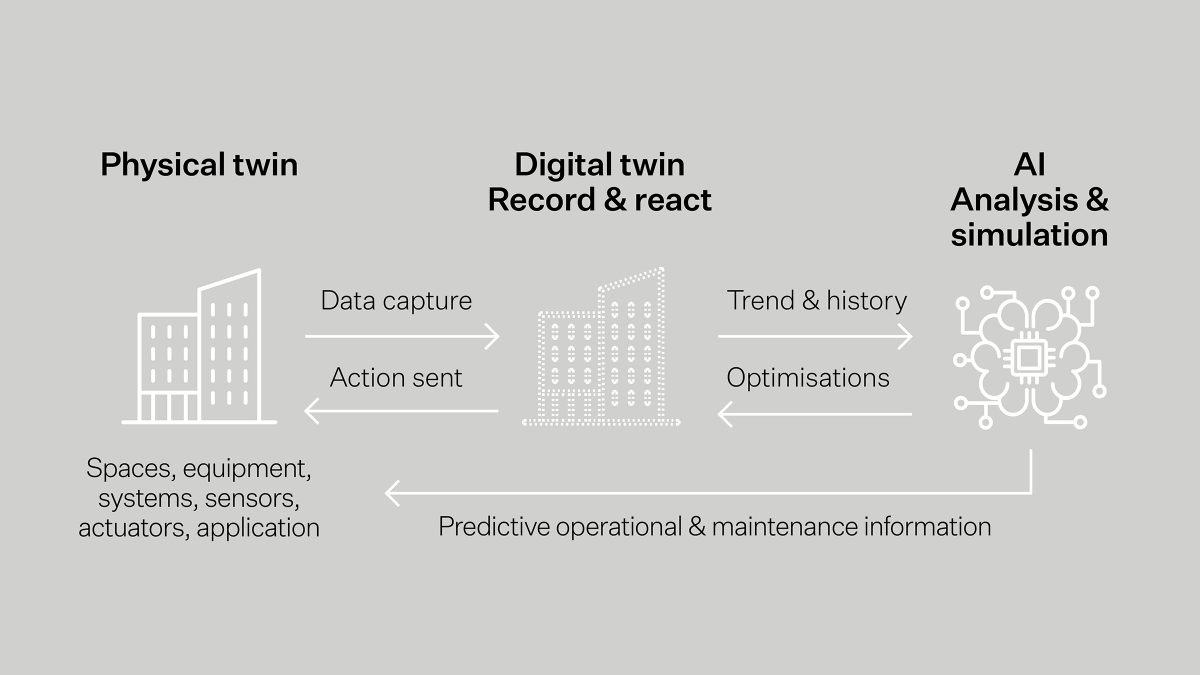
Digital twins are constructed on a pioneering, fully integrated building controls platform. Within this platform, each control system sits on a singular network and is individually addressed. This allows organisations to benefit from extensive datasets from various sensors. It creates an adaptable control system that enables an understanding of how spaces are being used in real-time.
When we connect a building to a digital twin, cloud services host analytics tools to monitor operations. These tools help guide facility teams on equipment status, highlighting potential maintenance needs before they become evident from a performance standpoint. Cloud services also enable automated reporting, recording and trending of real-time energy usage and carbon emissions to support sustainability and net zero goals.
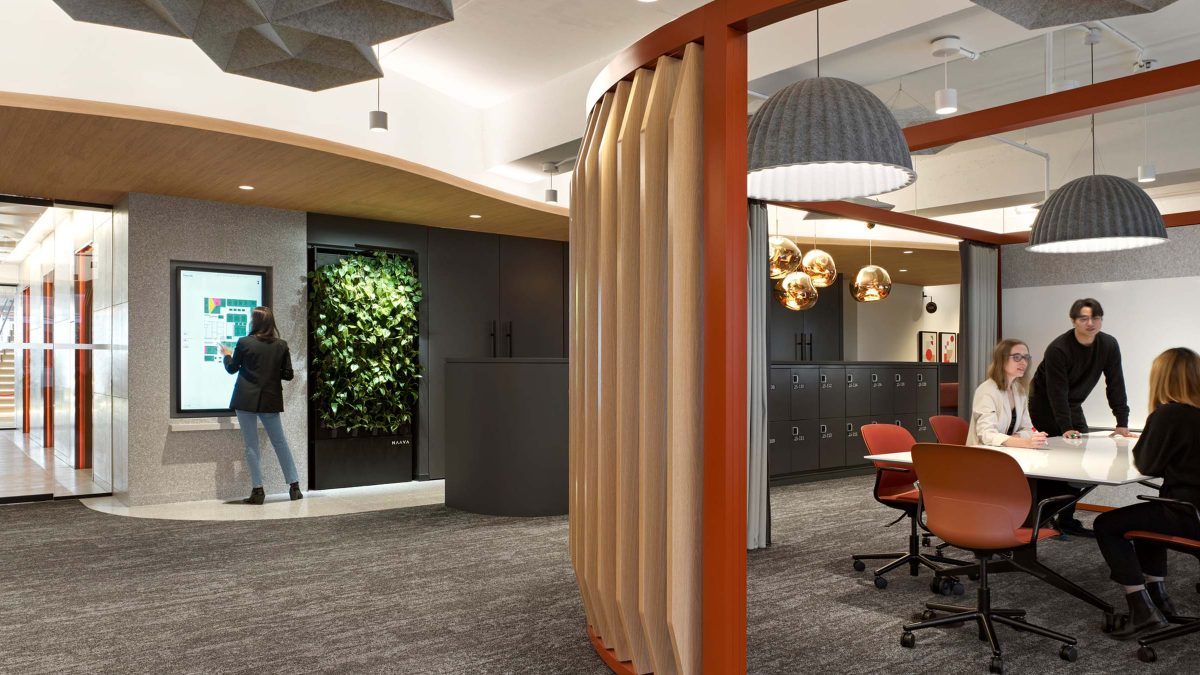 Buildings become communicators through sensors and AI tools, advising facility managers when to service equipment and making operations more efficient.
Buildings become communicators through sensors and AI tools, advising facility managers when to service equipment and making operations more efficient. Digital twins modernise how organisations capture and visualise data, integrate networks, and analyse information. This is achieved through a sophisticated array of techniques and methodologies, including:
Data capture and integration are at the core of this transformative process, enabling a multifaceted approach to acquiring, managing and leveraging data. This approach helps create accurate digital representations of physical assets or systems. Furthermore, this technology unlocks the full potential of data. It provides organisations with actionable insights that drive informed decision-making and innovation.
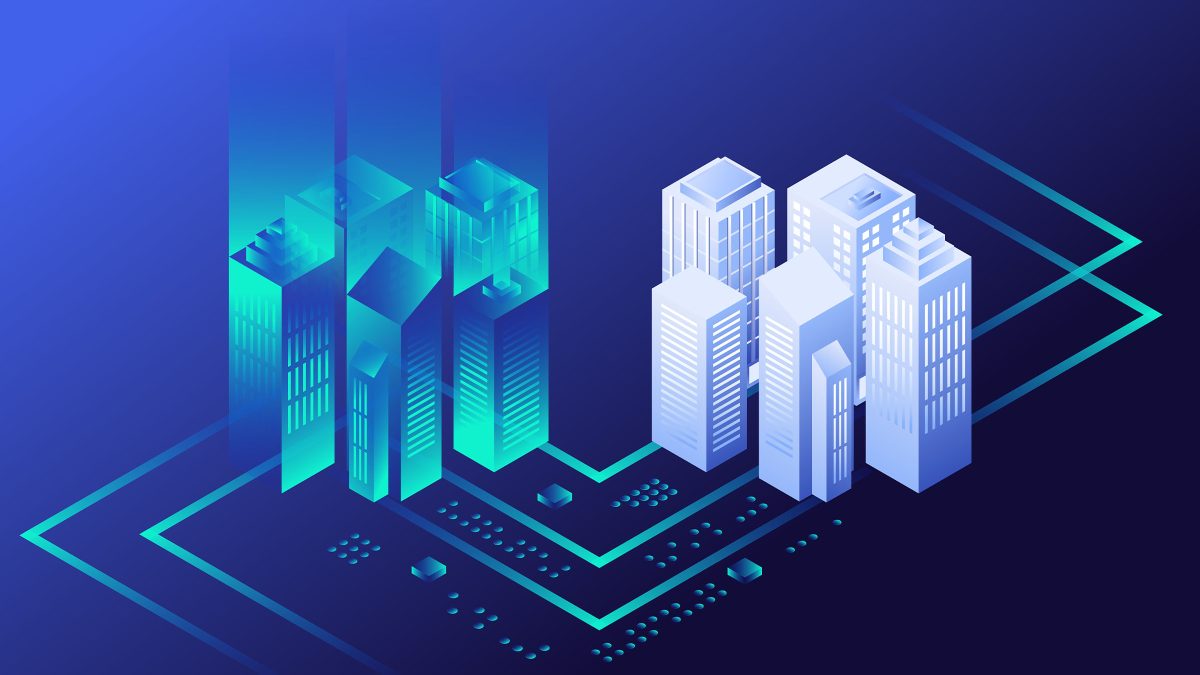
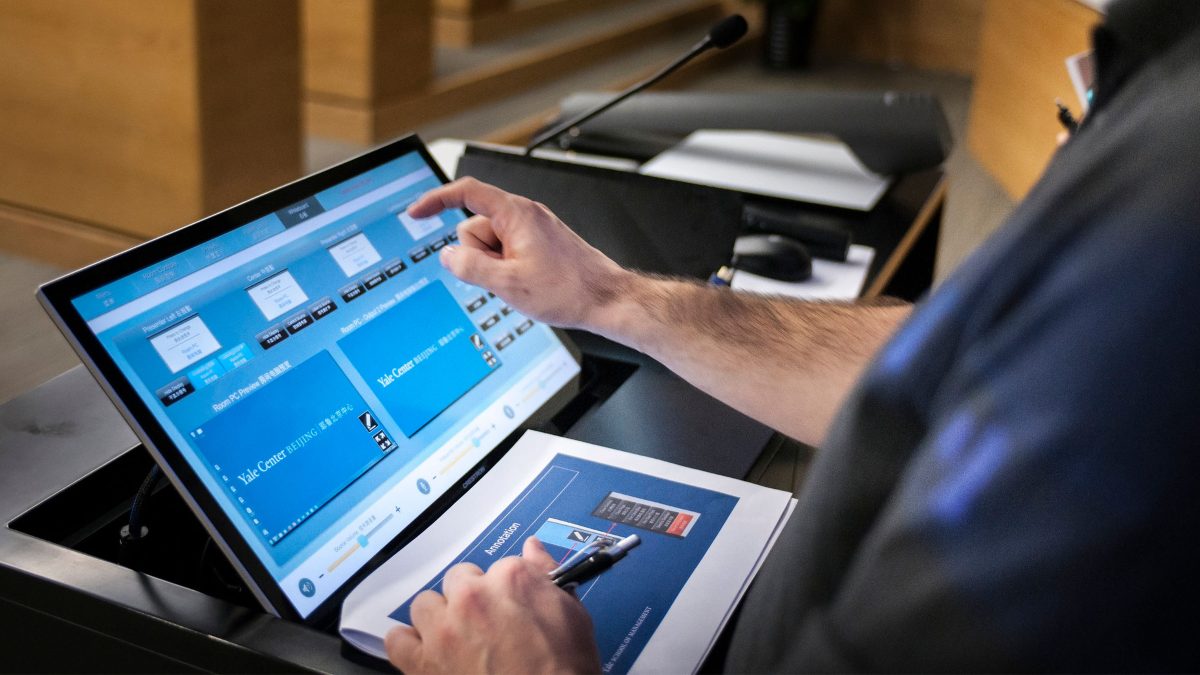
Real-time visualisation capabilities are integral to the effectiveness of digital twin systems. They empower organisations to make informed decisions, uncover hidden patterns, and fully harness the potential of their data through:
Dashboards and reporting tools: These serve as central hubs for accessing and monitoring key performance indicators (KPIs) and operational metrics in real-time.
Real-time Internet of Things (IoT) integration: A cornerstone of digital twin technology, enabling organisations to capture and analyse data from sensors, devices and other IoT endpoints in real-time.
Insights and analytics: Using analytics techniques such as machine learning, predictive modeling and anomaly detection, organisations can uncover hidden patterns, correlations and trends within their data. This enables them to anticipate future events and identify emerging risks and opportunities.
Advanced visualisation: Technologies like augmented reality (AR) and virtual reality (VR) allow organisations to interact with their digital twins in immersive 3D environments. This interaction provides deeper insights into complex systems and processes.
Real-time visualisations enable proactive decision-making, deeper insights and swift responses to changing conditions and emerging opportunities.
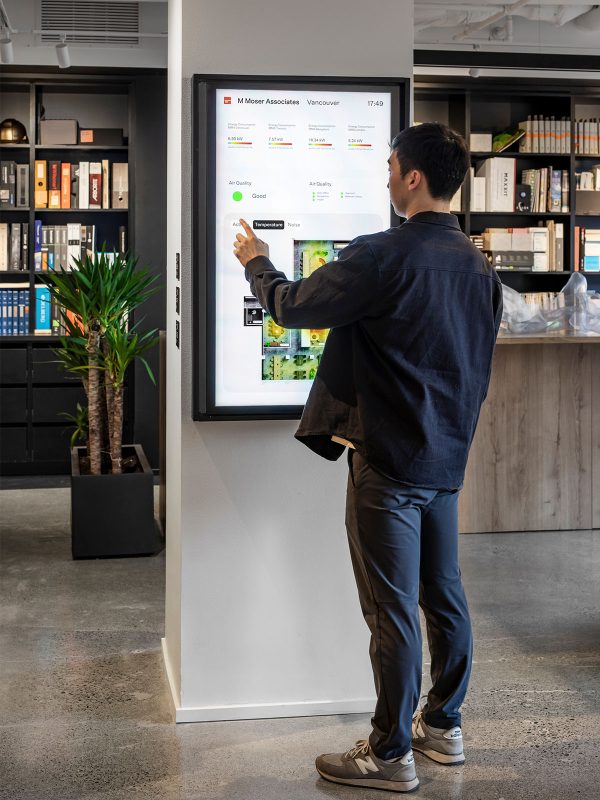
By breaking down traditional barriers to information exchange and collaboration, digital twins enable stakeholders to collaborate more effectively, achieve common goals and drive innovation.
This technology supports organisations and communities by improving information sharing, eliminating data silos and increasing internal and external engagement.
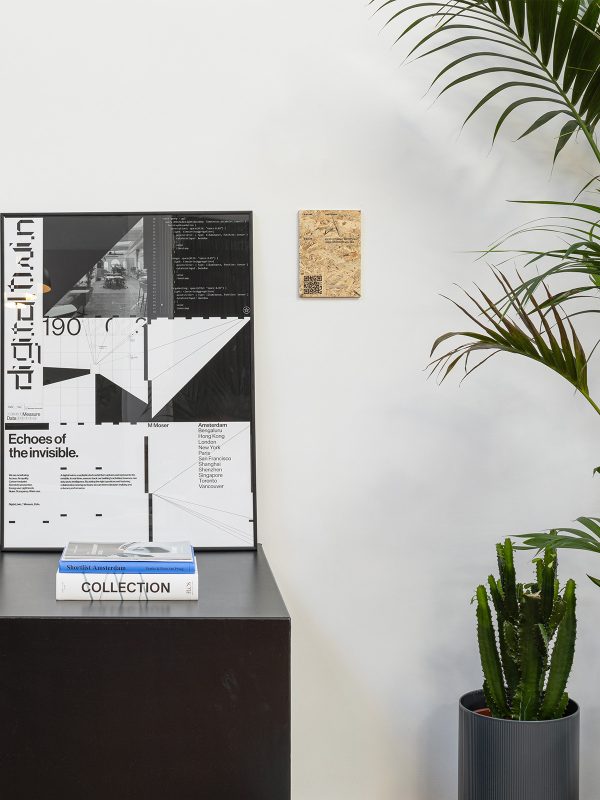 At our Amsterdam living lab, we combined sustainability and technology to produce bespoke art. This poster features lines of code from our cloud-based digital twin.
At our Amsterdam living lab, we combined sustainability and technology to produce bespoke art. This poster features lines of code from our cloud-based digital twin. Analysing and predicting outcomes are critical functions of digital twin systems. They are enabled by a suite of advanced statistical, machine learning (ML), deep learning (DL) and artificial intelligence (AI) techniques.
These methodologies empower organisations to extract valuable insights from data, identify patterns and anticipate future trends. Thereby, they enhance decision-making and drive innovation. Methodologies include:
Overall, these proactive approaches enable organisations to mitigate risks, optimise resources and make more informed decisions.
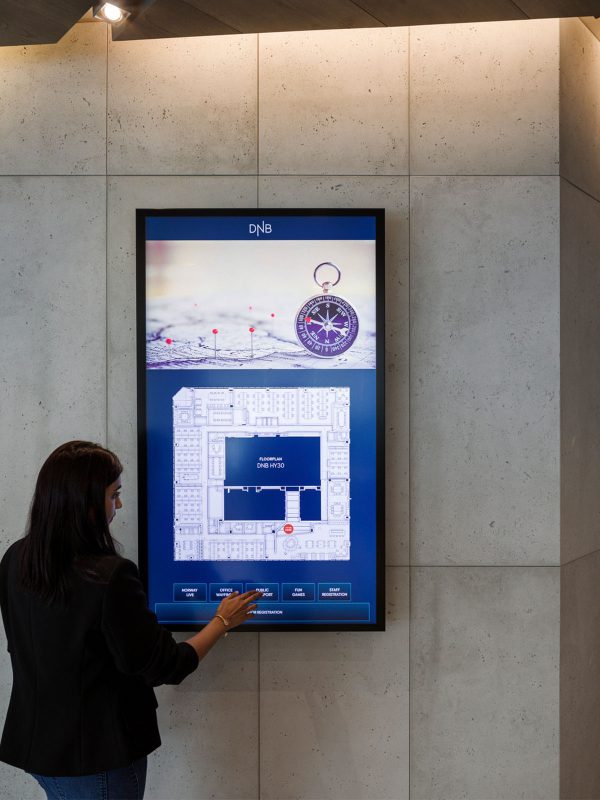
A digital twin harnesses real-time data to drive predictive analytics, optimising various aspects of space and building operations to enhance efficiency. These optimisations encompass several key areas:
Energy savings: By fine-tuning power, lighting and HVAC systems, digital twins enable significant reductions in energy consumption, promoting sustainability and cost savings.
Improved indoor environment: Through data-driven insights, digital twins help create a healthier and more conducive workspace, supporting higher employee satisfaction and productivity levels.
Predictive maintenance: Leveraging predictive analytics, digital twins proactively identify potential failures in building systems, allowing for timely intervention and minimising downtime.
Space optimisation: By analysing space utilisation metrics, digital twins inform decisions that meet the organisation’s needs, enhance productivity and accommodate future growth.
Scenario simulation: Digital twins enable the simulation of various strategies, such as energy-saving initiatives, workforce planning and incident response. Furthermore, these simulations support the development of optimal solutions and enhance overall operational effectiveness.
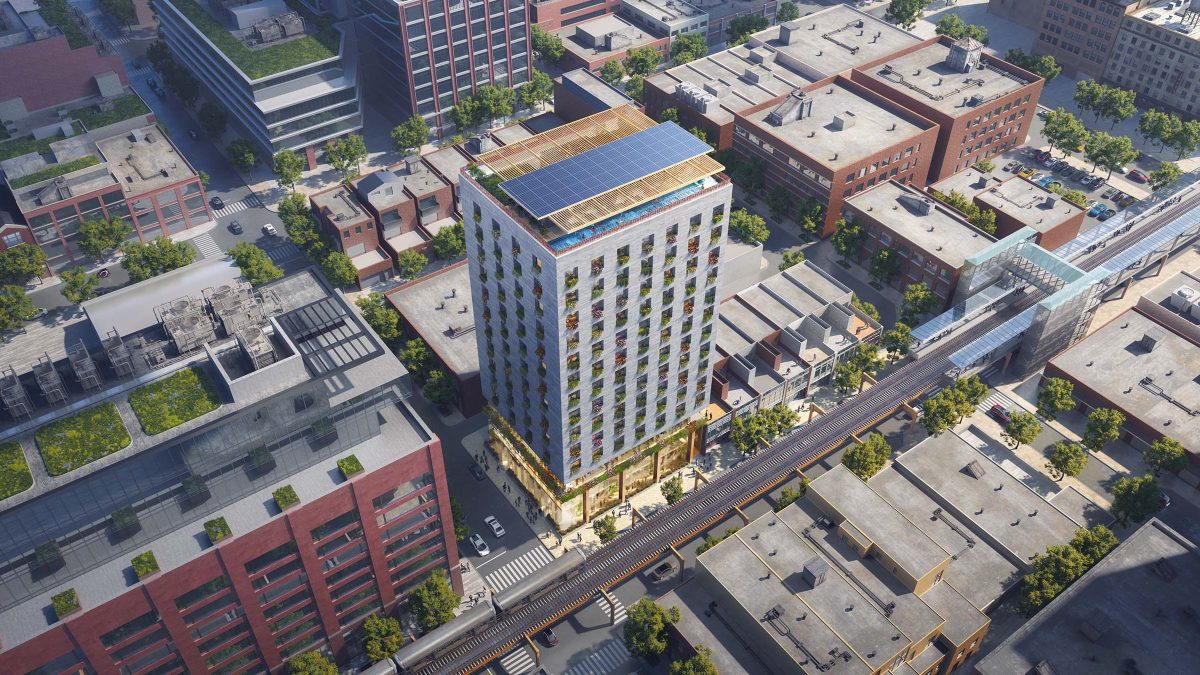 We designed this project to leverage technology, machine learning and AI tools to deliver the most adaptable and regenerative environment for people and commercial partners.
We designed this project to leverage technology, machine learning and AI tools to deliver the most adaptable and regenerative environment for people and commercial partners. 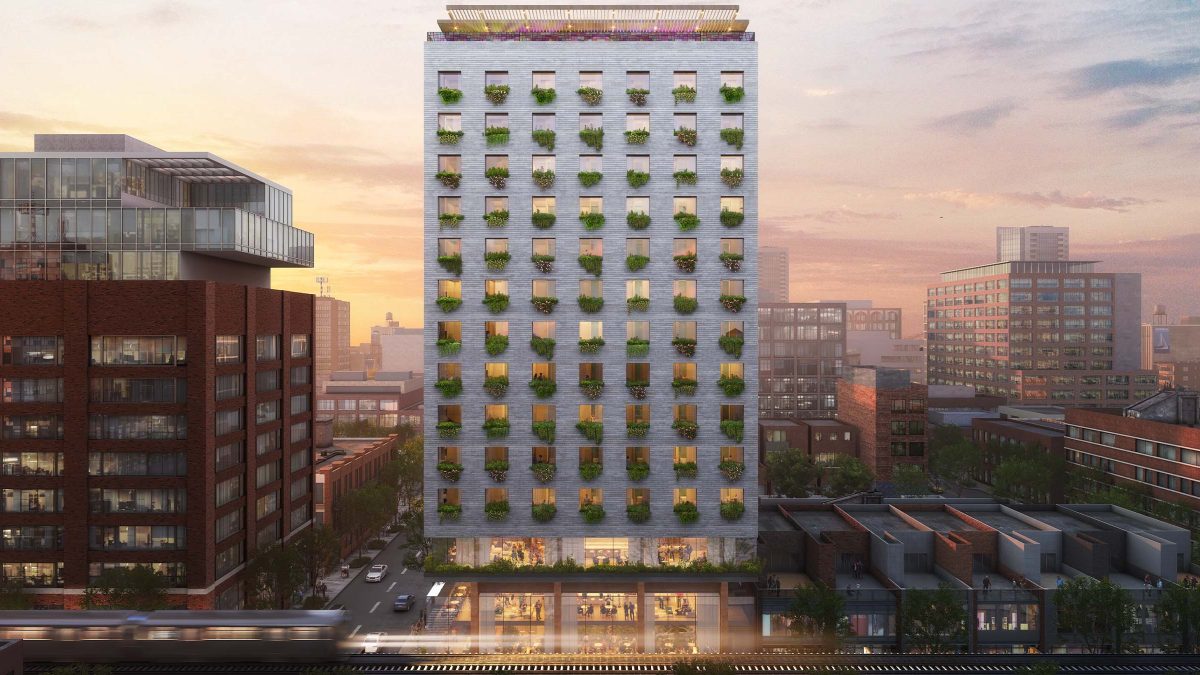 The building leverages data from many sources to support wellness and minimise operational carbon through AI optimisation.
The building leverages data from many sources to support wellness and minimise operational carbon through AI optimisation. From a user perspective, having real-time access to operational data allows individuals to monitor current air quality levels, carbon emissions and the overall environmental performance of their office. This access helps them stay informed and make data-driven decisions regarding wellbeing and efficiencies.
Operational data can also include occupancy rates – identifying busy versus quiet spaces – as well as light and noise levels. Information like this can help people select a workspace that aligns with their needs. Consequently, this supports a workplace culture that prioritises diversity, equity and inclusion (DEI), while also emphasising health and wellbeing.
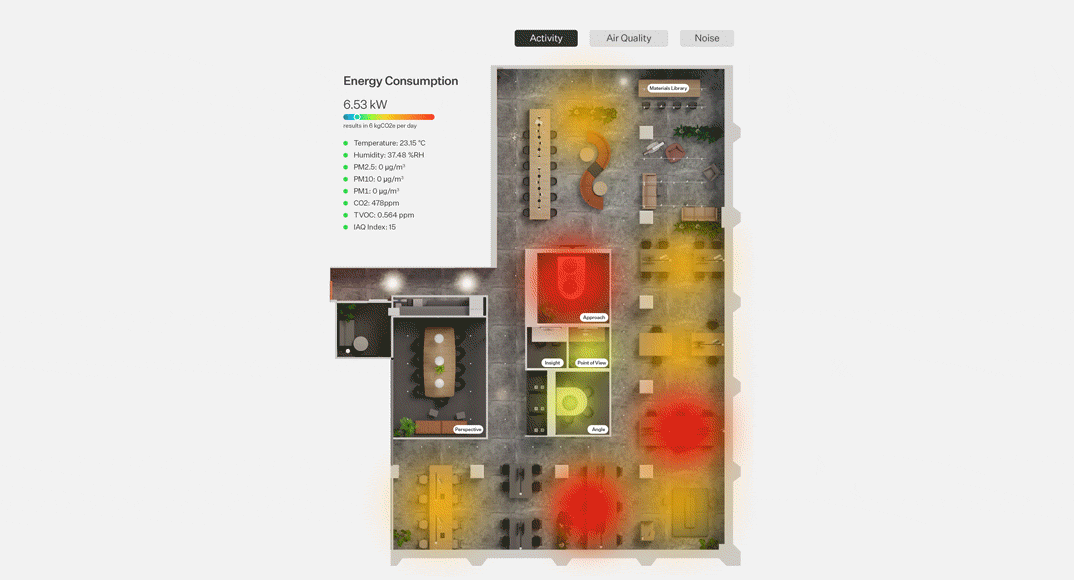
Curious to learn more about how these systems can benefit your project goals? Contact our team today.